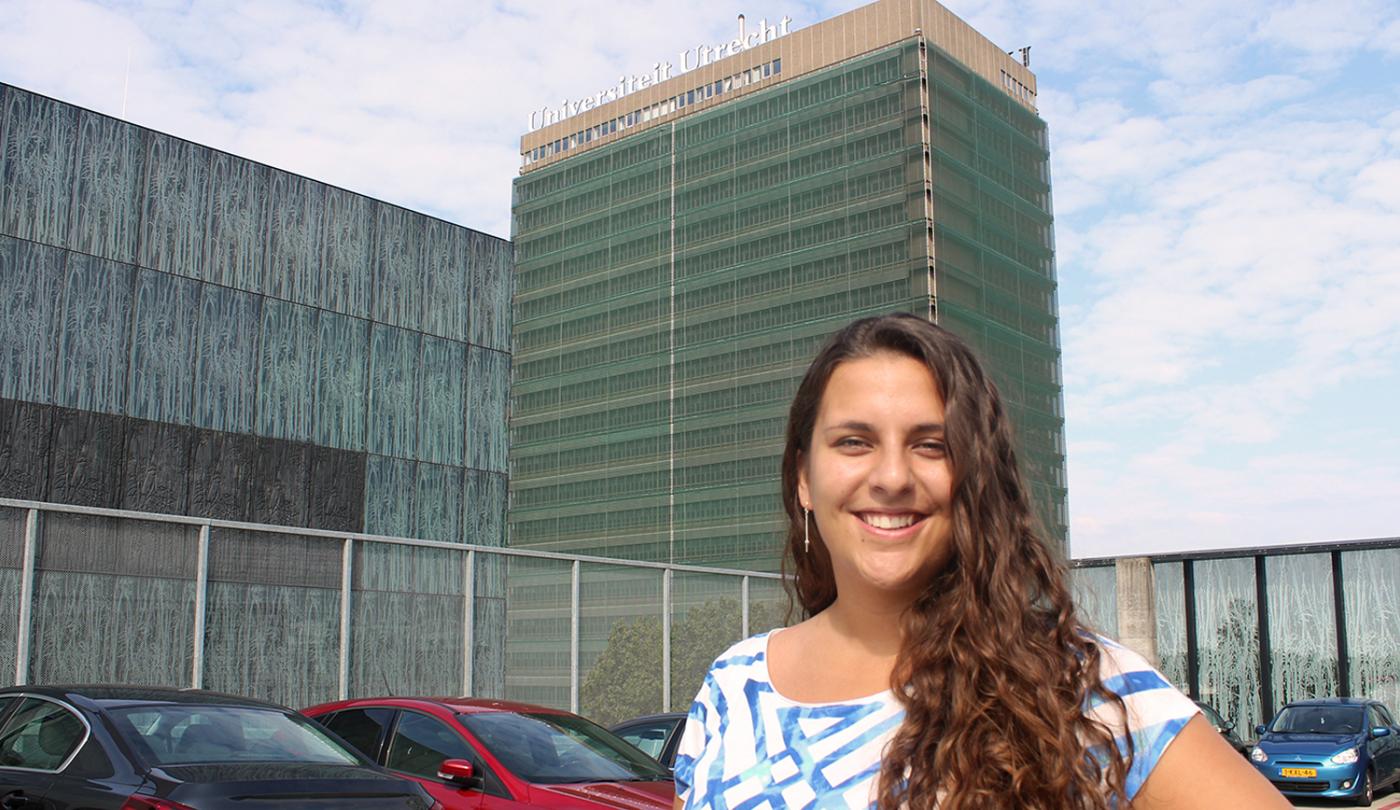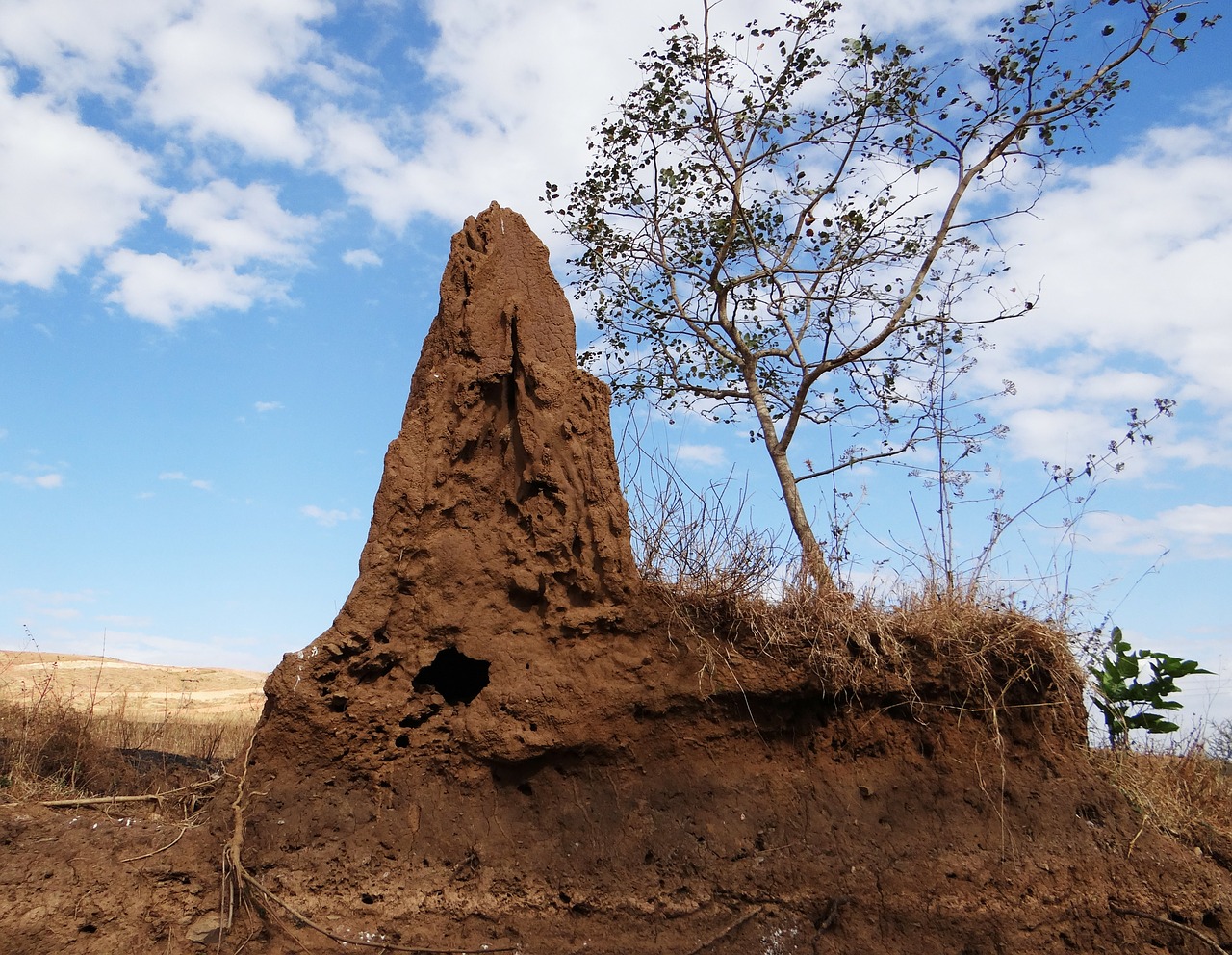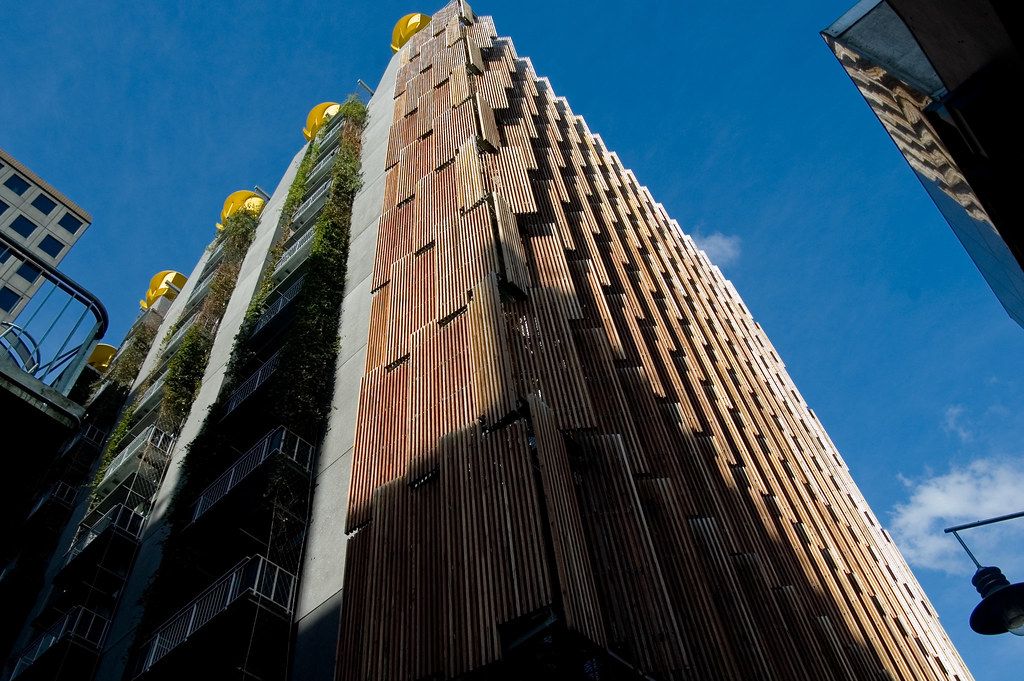Polar bear skins and termite mounds inspiration for new Van Unnik building

Would it be possible to give the Van Unnik building a ‘coat of grass’, which would isolate in the winter and – through evaporation – cool down in summer? It might be possible to simulate that effect a coat has – the same way a polar bear’s fur coat works – on the building’s façade. Or installing a ventilation system based on the working of a termite mound? With their elaborate constructions, termites manage to create an air flow that provides fresh air and a cool indoor climate.
After years of deliberation, the university recently decided not to entirely demolish the monumental-yet-decrepit building in the centre of De Uithof. The building has been empty for quite some time now, and has also been closed for students and employees for a time. In the coming years, the façade, which is filled with asbestos, will be dismantled, after which the building’s bare frame is to be given a new ‘skin’.
On behalf of the university’s department of Corporate Real Estate & Campus, Biology student Florence Hunnekens wrote a Bachelor’s thesis in which she studies whether ‘biomimicry’ – literally mimicking or simulating nature – could offer solutions to one of the challenges the university is facing. In the new Van Unnik building, the university wants to create a pleasant work environment for students and employees, without using any energy-wasting, polluting methods.
Termite mound, foto Pixabay
“When I had classes there, I never thought the Van Unnik building was inspiring, but now I see its potential,” Hunnekens says, sitting in the Basket bar at the foot of the concrete giant, which is wrapped in green nets. “It would be really cool if in ten years, there’s a beautiful, green, innovative building there. And hopefully, they’ll have incorporated some of my ideas in it.”
In the past year, Hunnekens researched how animals and plants create an optimal temperature and air quality in their own bodies or in their immediate environments. She also looked at whether these mechanisms could be applied in the redevelopment of the Van Unnik building. Temperature, air quality and light, she says, are vital in creating a healthy work environment.
It led to a succinct, legible thesis, in which she studies – among other things – the functioning of an elephant’s skin. But Hunnekens also writes about how trees in warm climates regulate their own temperature with patterns or bark properties that minimise water evaporation. Furthermore, she points out so-called natural ‘phase changing materials’ that respond to changes in temperature or light. Pine cones, for example, use an ingenious tissue structure to open up their scales when the humidity is low in order to release their seeds. Both mechanisms may also be applicable in the new Van Unnik building, Hunnekens states.
Not an architect
But that’s quite a way off, Florence Hunnekens realises. “With this thesis, I explain that there’s a lot we can learn from 3.8 billion years of evolution, and I show which things you could use as inspiration for bio-innovation in façade technology. But I’m a biologist, not an architect. Now, it’s up to others to work with this.”
In her thesis, Hunnekens suggests the UU look at buildings in which biomimicry has already been applied. The best-known example in the Netherlands is the city hall in Venlo. In other parts of the world, a source of inspiration is the Council House in Melbourne. That building’s ventilation system was indeed based on the working of a termite mound. “Hopefully, with these examples, I’m making it easier to take the step towards a way of thinking in which buildings are seen more as a part of their natural environment.” Council House in Melbourne, foto Jonathan Lin / Flickr
Council House in Melbourne, foto Jonathan Lin / Flickr
Hunnekens’ enthusiasm stems from her participation in a course called ‘nature-based design’ during her biology studies. For that course, she worked on a project in which students assisted the Ministry of Defence by thinking about the environmentally-friendly ways of providing army units in dry areas with water, as opposed to the current system of plastic bottles. Among other things, they looked at the armour of the Namibian fog-basking beetle, which it uses to collect dew, and at spider webs.
Teacher Jaco Appelman is one of the forces behind the biomimicry education and research in Utrecht. Three years ago, the Master’s programme Bio-inspired Innovation started at the UU in which students look for innovations that contribute to a sustainable, circular economy. “Biomimicry can help with that, because there’s ethical value in the concept. It goes beyond finding inspiration in nature. If you’ve got knowledge of birds, you can make very effective fighter planes, but biomimicry is about what you can learn from nature, not what you can use from it.”
Appelman sees a perfect opportunity for achieving those ideals in the university’s corporate real estate. “As an organisation, are we able to construct buildings that feed instead of destroy, that create clean water instead of use it up, that produce energy instead of consume it? It’s likely that there’s so much more possible at a university campus than there is in regular construction. You should be able to achieve fundamental innovations quicker within a knowledge institution.”
Conservative construction
Ever since Fiona van ‘t Hullenaar started as director, Appelman has found an audience in the university’s Corporate Real Estate & Campus department. At her previous position at ASR, Van ‘t Hullenaar led the transformation of the company’s headquarters in Rijnsweerd to a light, sustainable building. In an ambition document, the department recently stated explicitly that “circular” and “passive” construction should be the starting points in any new construction and renovation projects at the university. That means recycled materials should be used, and that buildings should generate more energy than they consume.
Appelman: “Now that the Van Unnik building will remain, we’ve said: let’s work together to find nature-based applications that are applicable. The construction industry is conservative: what you don’t know is probably no good. That’s why we wanted to start with a type of menu. That turned into this Bachelor’s thesis.”
Appelman understands that he’s at a beginning point. “Of course, the university doesn’t want to run any large risks. The same goes for the architects and contractors. Everyone’s looking for proven technology. But if the technology’s there, it’s the duty of a knowledge institution to research whether it can in fact be used on campus, I think. Our students and researchers can help think about this, and perhaps ideas can slowly be integrated into construction processes. That way we can become a learning organisation.”
Alp mountain meadows in De Uithof
Florence Hunnekens, at least, is eager to take her research to the next level. She’s elated about the “overwhelmingly positive response” she received on her Bachelor’s thesis. A LinkedIn post was read 3,500 times, and invitations from major construction corporations came trickling in. Talks are in progress with the department of Corporate Real Estate and Campus about a follow-up project for her Master’s thesis.
Hunnekens herself has become enthusiastic about a study on the possibility of providing the Van Unnik building with a ‘coat of grass’. “Nothing like that exists yet. Of course there are ‘green’ buildings, but the only function the vegetation has in those cases is either filtering fine dust or just aesthetics. I want to see whether it might be possible to retain heat in a building, or release it. And I want to turn it into a truly circular ecosystem that, for instance, autonomously provides moisture to the plants that need it.”
Appelman has some reservations – the vertical walls of the building are problematic, for example. “But perhaps you should think about gradual slopes. That would also connect it to the Botanical Gardens. Put some sheep on them. Why not?”
The department of Corporate Real Estate and Campus states in a response that it’s very content with the recommendations in Florence Hunnekens’ Bachelor’s thesis. At the same time, the department states that definite applications should not be expected in the short term, as further research is required. Construction processes always take a long time. The department states it is happy to contribute to further explorations.
Meetings have been planned with Hunnekens to discuss a follow-up assignment: “We’ve seen that some systems are still at an early stage, and we’d like to contribute to the further development of certain systems. We see our buildings and campus as a living lab in which UU research can be applied – within certain limits.”
The technical execution of the ideas is what makes matters so complicated, the department says. “We’d need a specialised façade contractor to assist in the research, or we’d need to create a collaboration with the partner university in Eindhoven. A lot of bio-inspired technology doesn’t have proof of concept yet, making it too risky for the UU to apply. We’ll gladly use our network in construction to bring together parties who would be able to realise this.”